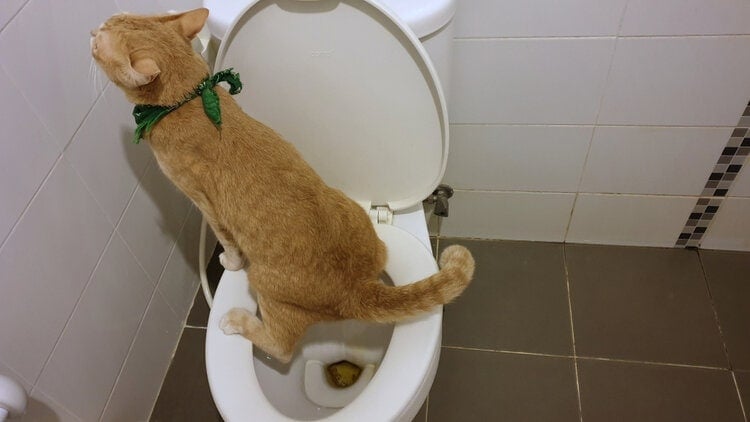Potential Risks of Flushing Cat Poop Down Your Toilet - Tips for Better Handling
Potential Risks of Flushing Cat Poop Down Your Toilet - Tips for Better Handling
Blog Article
They are making a few great observations related to How to Dispose of Cat Poop and Litter Without Plastic Bags as a whole in this article on the next paragraphs.

Introduction
As pet cat proprietors, it's vital to be mindful of exactly how we get rid of our feline friends' waste. While it may seem convenient to purge feline poop down the bathroom, this method can have harmful consequences for both the atmosphere and human health and wellness.
Ecological Impact
Purging cat poop presents unsafe virus and bloodsuckers right into the water system, posturing a considerable risk to aquatic ecosystems. These impurities can adversely influence marine life and concession water quality.
Wellness Risks
In addition to environmental issues, purging pet cat waste can also posture health and wellness risks to human beings. Pet cat feces may consist of Toxoplasma gondii, a parasite that can cause toxoplasmosis-- a possibly extreme health problem, particularly for expectant females and people with damaged immune systems.
Alternatives to Flushing
Luckily, there are safer and more responsible methods to take care of cat poop. Think about the following alternatives:
1. Scoop and Dispose in Trash
One of the most usual technique of dealing with pet cat poop is to scoop it right into a naturally degradable bag and toss it in the garbage. Be sure to make use of a committed litter inside story and take care of the waste promptly.
2. Usage Biodegradable Litter
Select biodegradable cat trash made from materials such as corn or wheat. These clutters are environmentally friendly and can be safely gotten rid of in the garbage.
3. Bury in the Yard
If you have a yard, think about burying feline waste in a designated location far from veggie gardens and water sources. Be sure to dig deep sufficient to avoid contamination of groundwater.
4. Mount a Pet Waste Disposal System
Invest in a pet waste disposal system specifically developed for feline waste. These systems utilize enzymes to break down the waste, minimizing smell and environmental impact.
Conclusion
Responsible pet possession prolongs past supplying food and shelter-- it also entails appropriate waste management. By avoiding flushing cat poop down the commode and going with alternative disposal approaches, we can lessen our ecological footprint and safeguard human wellness.
Why You Should Never Flush Cat Poop Down the Toilet
A rose by any other name might smell as sweet, but not all poop is created equal. Toilets, and our sewage systems, are designed for human excrement, not animal waste. It might seem like it couldn’t hurt to toss cat feces into the loo, but it’s not a good idea to flush cat poop in the toilet.
First and foremost, assuming your cat uses a litter box, any waste is going to have litter on it. And even the smallest amount of litter can wreak havoc on plumbing.
Over time, small amounts build up, filling up your septic system. Most litter sold today is clumping; it is made from a type of clay that hardens when it gets wet. Ever tried to scrape old clumps from the bottom of a litter box? You know just how cement-hard it can get!
Now imagine just a small clump of that stuck in your pipes. A simple de-clogger like Drano isn’t going to cut it. And that means it’s going to cost you big time to fix it.
Parasitic Contamination
Believe it or not, your healthy kitty may be harboring a nasty parasite. Only cats excrete Toxoplasma in their feces. Yet it rarely causes serious health issues in the cats that are infected. Most people will be fine too if infected. Only pregnant women and people with compromised immune systems are at risk. (If you’ve ever heard how women who are expecting are excused from litter cleaning duty, Toxoplasma is why.)
But other animals may have a problem if infected with the parasite. And human water treatment systems aren’t designed to handle it. As a result, the systems don’t remove the parasite before discharging wastewater into local waterways. Fish, shellfish, and other marine life — otters in particular — are susceptible to toxoplasma. If exposed, most will end up with brain damage and many will die.
Depending on the species of fish, they may end up on someone’s fish hook and, ultimately on someone’s dinner plate. If that someone has a chronic illness, they’re at risk.
Skip the Toilet Training
We know there are folks out there who like to toilet train their cats. And we give them props, it takes a lot of work. But thanks to the toxoplasma, it’s not a good idea.
:max_bytes(150000):strip_icc()/0S1A1090-49a8e2c66f8e41d6901f2559787a7f24.jpg)
Do you appreciate reading up on How to Dispose of Cat Poop and Litter Without Plastic Bags? Leave a review down below. We'd be interested to hear your ideas about this posting. Hoping to see you back again soon. I beg you take a moment to share this blog entry if you liked it. Thank you so much for taking the time to read it.
Get A Free Estimate Report this page